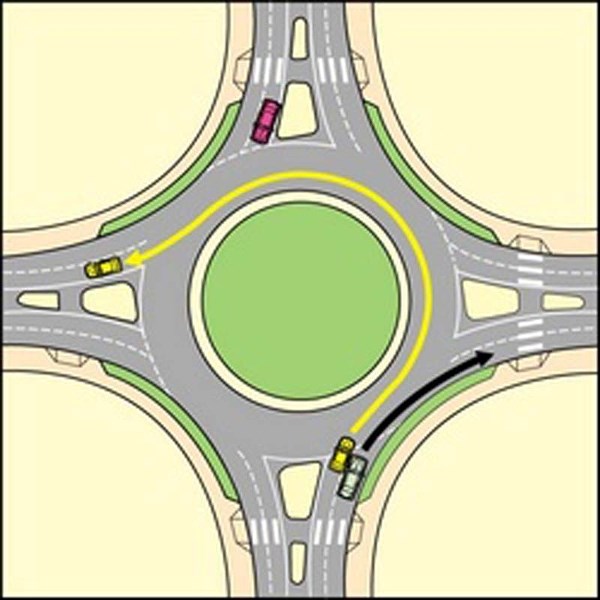Roundabouts are a proven way of reducing injuries at intersections, say experts, and would make Morinville’s main street safer.
Morinville residents got their first look at the final draft of the Highway 642 functional planning study last week at an open house at the Community Cultural Centre. The plan, if approved by Alberta Transportation, would see seven roundabouts built on the road (which doubles as the town’s main street) in the next 75 years.
Several residents at the open house questioned whether this was a good idea. Some questioned whether drivers would know how to use them properly, while others wondered how they would work in the winter or with big trucks.
Roughly speaking, roundabouts are small traffic circles.
Roundabouts are much smaller than traffic circles, said Vicki Dodge, project manager for the planning study – about 39 metres wide, compared to 100. This makes for a much tighter turn and forces cars to slow to about 30 kilometres an hour. Roundabouts can also have “truck aprons” or a lowered ring around the central island that big rigs can drive over while turning.
The Region of Waterloo has built about 18 roundabouts on its streets since 2003, said Waterloo traffic supervisor Mike Jones, five of which are on Ira Needles Blvd. – a two-lane arterial with numerous neighbourhoods and businesses along it, including a Walmart.
U.S. research suggests that roundabouts cause 90 per cent fewer deaths and 37 per cent fewer collisions than signalled intersections, Dodge said, citing data from the U.S. Federal Highway Administration.
The U.S. based Insurance Institute for Highway Safety (IIHS) reports that converting a signalized or stop-sign intersection to a roundabout reduces all collisions by about 41 per cent and injury collisions by 76 per cent.
Roundabouts are safer than signalized intersections, said Andrea Bill, a traffic safety engineer with the University of Wisconsin-Madison’s Traffic Operations and Safety lab.
The key is the shape, Bill said: the tight turn forces you to slow down, reducing speed, and forces you to move in one direction, preventing the right-angle or head-on collisions that lead to severe injuries. You still get sideswipes and fender-benders at roundabouts – more of them, in some cases – but the lower speeds and angles mean you don’t get as many injuries.
Waterloo has seen these principles in effect at its roundabouts, Jones reports. His department found that drivers enter roundabouts at about 29 km/h and were far less likely to be injured in collisions in them. “People aren’t dying in roundabouts, whereas they are dying in controlled signal (intersections).”
Some residents at the open house questioned how safe roundabouts were for pedestrians, especially the visually impaired.
Roundabouts aren’t the best for visually impaired pedestrians, Bill notes, as they don’t usually have audible signals for crosswalks. You could always add a signalized crosswalk, but the effects of such signals on traffic have been poorly studied.
But roundabouts are safer for everyone else, the IIHS reports: European research suggests that converting conventional intersections to roundabouts reduces pedestrian crashes by 75 per cent.
Jones said his department found no evidence of elevated risk to pedestrians at roundabouts. Studies by his department suggest that there will be about one pedestrian collision at a roundabout every 25 years, compared to one every 11 at a traffic signal. The lower speeds and shorter crossing distances also appeared to reduce the risk of injury.
Roundabouts, especially double-lane ones, can be confusing for drivers, Bill noted. She and Jones emphasized the importance of public education and proper signage if Morinville planned to build roundabouts.
Visit www.regionofwaterloo.ca for more on roundabouts.




